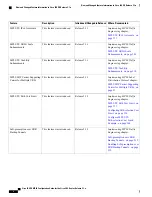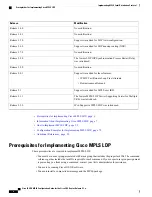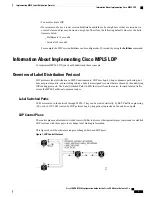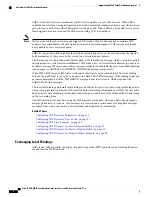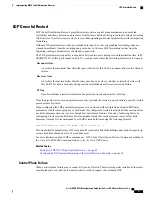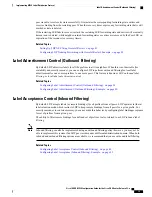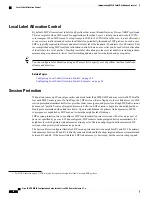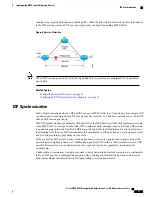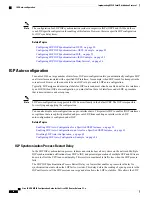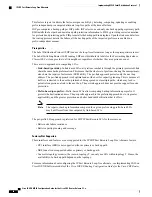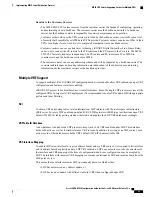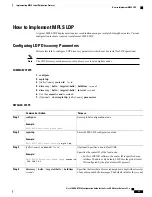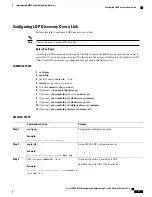
Local Label Allocation Control
By default, LDP allocates local labels for all prefixes that are not Border Gateway Protocol (BGP) prefixes
1
.
This is acceptable when LDP is used for applications other than Layer 3 virtual private networks (L3VPN)
core transport. When LDP is used to set up transport LSPs for L3VPN traffic in the core, it is not efficient or
even necessary to allocate and advertise local labels for, potentially, thousands of IGP prefixes. In such a case,
LDP is typically required to allocate and advertise local label for loopback /32 addresses for PE routers. This
is accomplished using LDP local label allocation control, where an access list can be used to limit allocation
of local labels to a set of prefixes. Limiting local label allocation provides several benefits, including reduced
memory usage requirements, fewer local forwarding updates, and fewer network and peer updates.
You can configure label allocation using an IP access list to specify a set of prefixes that local labels can
allocate and advertise.
Tip
Related Topics
Configuring Local Label Allocation Control, on page 48
Configuring Local Label Allocation Control: Example, on page 82
Session Protection
When a link comes up, IP converges earlier and much faster than MPLS LDP and may result in MPLS traffic
loss until MPLS convergence. If a link flaps, the LDP session will also flap due to loss of link discovery. LDP
session protection minimizes traffic loss, provides faster convergence, and protects existing LDP (link) sessions
by means of
“
parallel
”
source of targeted discovery hello. An LDP session is kept alive and neighbor label
bindings are maintained when links are down. Upon reestablishment of primary link adjacencies, MPLS
convergence is expedited as LDP need not relearn the neighbor label bindings.
LDP session protection lets you configure LDP to automatically protect sessions with all or a given set of
peers (as specified by peer-acl). When configured, LDP initiates backup targeted hellos automatically for
neighbors for which primary link adjacencies already exist. These backup targeted hellos maintain LDP
sessions when primary link adjacencies go down.
The Session Protection figure illustrates LDP session protection between neighbors R1 and R3. The primary
link adjacency between R1 and R3 is directly connected link and the backup; targeted adjacency is maintained
between R1 and R3. If the direct link fails, LDP link adjacency is destroyed, but the session is kept up and
1 For L3VPN Inter-AS option C, LDP may also be required to assign local labels for some BGP prefixes.
Cisco IOS XR MPLS Configuration Guide for the Cisco CRS Router, Release 5.1.x
16
Implementing MPLS Label Distribution Protocol
Local Label Allocation Control

